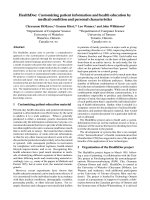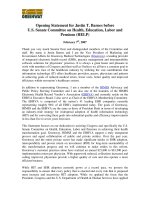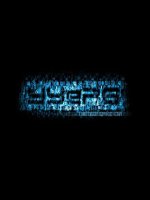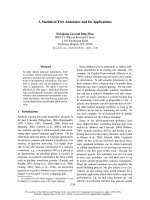2-D and 3-D Image Registration for Medical, Remote Sensing, and Industrial Applications pptx
Bạn đang xem bản rút gọn của tài liệu. Xem và tải ngay bản đầy đủ của tài liệu tại đây (6.59 MB, 280 trang )
TeAM
YYePG
Digitally signed by TeAM
YYePG
DN: cn=TeAM YYePG, c=US,
o=TeAM YYePG, ou=TeAM
YYePG, email=yyepg@msn.
com
Reason: I attest to the
accuracy and integrity of this
document
Date: 2005.05.03 21:14:16
+08'00'
2-D and 3-D
Image Registration
2-D and 3-D
Image Reg istration
for Medical, Remote Sensing,
and Industrial Applications
A. Ardeshir Goshtasby
A John Wiley & Sons, Inc., Publication
Copyright
c
2005 by John Wiley & Sons, Inc. All rights reserved.
Published by John Wiley & Sons, Inc., Hoboken, New Jersey.
Published simultaneously in Canada.
No part of this publication may be reproduced, stored in a retrieval system, or transmitted in any form or by
any means, electronic, mechanical, photocopying, recording, scanning, or otherwise, except as permitted
under Section 107 or 108 of the 1976 United States Cop yright Act, without either the prior written
permission of the Publisher, or authorization through payment of the appropriate per-copy fee to the
Copyright Clearance Center, Inc., 222 Rosewood Drive, Danvers, MA 01923, 978-750-8400, fax 978-646-
8600, or on the web at www.copyright.com. Requests to the Publisher for permission should be addressed
to the Permissions Department, John Wiley & Sons, Inc., 111 River Street, Hoboken, NJ 07030, (201) 748-
6011, fax (201) 748-6008.
Limit of Liability/Disclaimer of Warranty: W hile the publisher and author have used their best efforts in
preparing this book, they make no representations or warranties with respect to the accuracy or
completeness of the contents of this book and specifically disclaim any implied w arranties of
merchantability or fitness for a particular purpose. No warranty may be created or extended by sales
representatives or written sales materials. The a dvice and strategies contained herein may not be suitable
for your situation. You should consult with a professional where appropriate. Neither the publisher nor
author shall be liable for any loss of profit or any other commercial damages, including but not limited to
special, incidental, consequential, or other damages.
For general information on our other products and services please contact our Customer Care Department
within the U.S. at 877-762-2974, outside the U.S. at 317-572-3993 or fax 317-572-4002.
Wiley also publishes its books in a variety of electronic formats. Some content that appears in print, howe ver,
may not be available in electronic format.
Library of Congress Cataloging-in-Publication Data:
Goshtasby, Ardeshir.
2-D and 3-D image registration for medical, remote sensing, and industrial applications /
A. Ardeshir Goshtasby.
p. cm.
“Wiley-Interscience publication.”
Includes bibliographical references and index.
ISBN 0-471-64954-6 (cloth : alk. paper)
1. Im age p rocessing–Digital techniques. 2. Image analysis–Data processing. I. Title.
TA1637.G68 2005
621.36’7–dc22
2004059083
Printed in the United States of America
10987654321
To My Parents
and Mariko and Parviz
Contents
Preface xi
Acknowledgments xiii
Acronyms xv
1 Introduction 1
1.1 Terminologies 3
1.2 Steps in Image Registration 4
1.3 Summary of the Chapters to Follow 5
1.4 Bibliographical Remarks 5
2 Preprocessing 7
2.1 Image Enhancement 7
2.1.1 Image smoothing 7
2.1.2 Deblurring 11
2.2 Image Segmentation 15
2.2.1 Intensity thresholding 15
2.2.2 Boundary detection 17
2.3 Summary 39
vii
viii CONTENTS
2.4 Bibliographical Remarks 40
3 Feature Selection 43
3.1 Points 43
3.2 Lines 51
3.2.1 Line detection using the Hough transform 52
3.2.2 Least-squares line fitting 53
3.2.3 Line detection using image gradients 56
3.3 Regions 58
3.4 Templates 59
3.5 Summary 60
3.6 Bibliographical Remarks 60
4 Feature Correspondence 63
4.1 Point Pattern Matching 63
4.1.1 Matching using scene coherence 64
4.1.2 Matching using clustering 67
4.1.3 Matching using invariance 70
4.2 Line Matching 74
4.3 Region Matching 77
4.3.1 Shape matching 78
4.3.2 Region matching by relaxation labeling 82
4.4 Chamfer Matching 86
4.4.1 Distance transform 87
4.5 Template Matching 92
4.5.1 Similarity measures 92
4.5.2 Gaussian-weighted templates 99
4.5.3 Template size 100
4.5.4 Coarse-to-fine methods 101
4.6 Summary 103
4.7 Bibliographical Remarks 103
5 Transformation Functions 107
5.1 Similarity Transformation 112
CONTENTS ix
5.2 Projective and Affine Transformations 115
5.3 Thin-Plate Spline 116
5.4 Multiquadric 120
5.5 Weighted Mean Methods 123
5.6 Piecewise Linear 129
5.7 Weighted Linear 131
5.8 Computational Complexity 134
5.9 Properties of the Transformation Functions 136
5.10 Summary 139
5.11 Bibliographical Remarks 140
6 Resampling 143
6.1 Nearest Neighbor 144
6.2 Bilinear Interpolation 145
6.3 Cubic Convolution 147
6.4 Cubic Spline 149
6.5 Radially Symmetric Kernels 150
6.6 Summary 153
6.7 Bibliographical Remarks 154
7 Performance Evaluation 155
7.1 Feature Selection Performance 156
7.2 Feature Correspondence Performance 160
7.3 Transformation Function Performance 161
7.4 Registration Performance 163
7.5 Summary 164
7.6 Bibliographical Remarks 164
8 Image Fusion 167
8.1 Fusing Multi-Exposure Images 168
8.1.1 Image blending 168
8.1.2 Examples 172
8.2 Fusing Multi-Focus Images 175
8.3 Summary 177
x CONTENTS
8.4 Bibliographical Remarks 177
9 Image Mosaicking 181
9.1 Problem Description 182
9.2 Determining the Global Transformation 182
9.3 Blending Image Intensities 185
9.4 Examples 186
9.5 Mosaicking Range Images 189
9.6 Evaluation 192
9.7 Summary 193
9.8 Bibliographical Remarks 194
10 Stereo Depth Perception 197
10.1 Stereo Camera Geometry 198
10.2 Camera Calibration 202
10.3 Image Rectification 204
10.4 The Correspondence Process 207
10.4.1 Constraints in stereo 207
10.4.2 Correspondence algorithms 210
10.5 Interpolation 217
10.6 Summary 219
10.7 Bibliographical Remarks 220
Glossary 223
Refer ences 229
Index 255
Preface
Image registration is the process of spatially aligning two or more images of a scene.
This basic capability is needed in various image analysis applications. The alignment
process will determine the correspondence between points in the images, enabling
the fusion of information in the images and the determination of scene changes.
If identities of objects in one of the images are known, by registering the images,
identities of objects and their locations in anothe r image can be determined. Image
registration is a critical component of remote sensing, medical, and industrial image
analysis systems.
This book is intended for image analysis researchers as well as graduate students
who are starting research in image analysis. The book provides details of image
registration, and each chapter covers a component of image registration or an appli-
cation of it. Where applicable, implementation strategies are given and related work
is summarized.
In Chapter 1, the main terminologies used in the book are defined, an example of
image registration is given, and imag e registration steps are named. In Chapter 2 ,
preprocessing of images to facilitate image registration is described. This includes
image enhancement and image segmentation. Image enhancement is used to remove
noise and blur from images and image segmentation is used to partition images into
regions or extract region boundaries or edges for use in feature selection.
Chapters 3–5 are considered the main chapters in the book, covering the image
registration steps. In Chapter 3, methods and algorithms for detecting points, lines,
and regions are described, in Chapter 4, methods and algorithms for determining the
correspondence between two sets of features are given, and in Chapter 5, transforma-
xi
xii PREFACE
tion functions that use feature correspondences to determine a mapping function for
image alignment are discussed.
In Chapter 6 resampling m ethods are given and in Chapter 7 performance evalu-
ation measures, including accuracy, reliability, robustness, and speed are discussed.
Chapters 8–10 cover applications of image registration. Chapter 8 discusses cre-
ation of intensity and range image mosaics by registering overlapping areas in the
images, and Chapter 9 discusses methods for combining information in two or more
registered images into a single highly informative image. In particular, fusion of
multi-exposure and multi-focus images is discussed. Finally, Chapter 10 discusses
registration of stereo images for depth perception. Camera calibration and correspon-
dence algorithms are discussed in detail and examples are given.
Some of the discussions such as stereo depth perception apply to only 2-D images,
but many of the topics covered in the book can be applied to both 2-D and 3-D
images. Therefore, discussions on 2-D image registration and 3-D image registration
continue in parallel. First the 2-D methods and algorithms are described and then
their extensions to 3-D are provided.
This book represents my own experiences on image registration during the past
twenty years. The main objective has been to cover the fundamentals of image
registration in detail. Applications of image registration are not discussed in depth.
A large number of application papers appear annually in Proc. Computer Vision and
Pattern Recognition, Proc. Int’l Conf. Computer Vision, Proc. Int’l Conf. Pattern
Recognition, Proc. SPIE Int’l Sym. Medical Imaging,andProc. Int’l Sym. Remote
Sensing of Environment. Imag e registration p apers freq uently appear in the following
journals: Int’l J. Computer Vision, Computer Vision and Image Understanding, IEEE
Trans. Pattern Analysis and Machine Intelligence, IEEE Trans. Medical Imaging,
IEEE Trans. Geoscience and Remote Sensing, Image and Vision Computing,and
Pattern Recognition.
The figures used in the book are available online and may be obtained by visiting the
website The software implementing the methods
and algorithms discussed in the book can be obtained by visiting the same site. Any
typographical errors or errata found in the book will also be posted on this site. The
site also contains other sources of information relating to image registration.
A. ARDESHIR GOSHTASBY
Dayton, Ohio, USA
Acknowledgments
I would like to thank NASA for providing the satellite images and Kettering Med-
ical Center, Kettering, Ohio, for providing the medical images used in this book.
I also would like to thank Shree Nayar of Columbia University for providing the
multi-exposure images shown in Figs 8.2–8.5; Max Lyons for providing the multi-
exposure images shown in Fig. 8.6; Paolo Favaro, Hailin Jin, and Stefano Saotto of
University of California at Los Angeles for providing the multi-focus images shown in
Fig. 8.7; Cody Benkelman of Positive Systems for providing the aerial images shown
in Fig. 9.4; Yuichi Ohta of Tsukuba University for providing the stereo image pair
shown in Fig. 10.10; and Daniel Scharstein of Middlebury College and Rick Szeliski
of Microsoft Research for providing the stereo image pair shown in Fig. 10.11. My
Ph.D. students, Lyubomir Zagorchev, Lijun Ding, and Marcel Jackowski, have con-
tributed to this book in various ways and I appreciate their contributions. I also would
like to thank Libby Stephens for editing the grammar and style of this book.
A. A. G.
xiii
Acronyms
CT X-Ray Computed Tomography
FFT Fast Fourier Transform
IMQ Inverse Multiquadric
Landsat Land Satellite
LoG Laplacian of Gaussian
MAX Maximum
MQ Multiquadric
MR Magnetic Resonance
MSS Multispectral Scanner
PET Positron Emission Tomography
RaG Rational Gaussian
RMS Root Mean Squared
TM Thematic Mapper
TPS Thin-Plate Spline
xv
1
Introduction
Image registration is the process of determining the point-by-point correspondence
between two images of a scene. By registering two images, the fusion of multimod al-
ity information becomes possible, the depth map of the scene can be determined,
changes in the scene can be detected, and objects can be recognized.
An example of 2-D image registration is shown in Fig. 1.1. Figure 1.1a depicts a
Landsat multispectral scanner (MSS) image and Fig. 1.1b shows a Lan dsat thematic
mapper (TM) image of the same area. We will call Fig. 1.1a the reference image
andFig.1.1bthesensed image. By resampling the sensed image to the geometry of
the reference image, the image shown in Fig. 1.1c is obtained. Figure 1.1d shows
overlaying of the resampled sensed image and the reference image. Image registration
makes it possible to compare information in reference and sensed images pixel by
pixel and determine image differences that are caused by changes in the scene. In
the example of Fig. 1.1, closed-boundary regions were used as the features and the
centers of corresponding regions were used as the corresponding points. Although
ground cover appears differently in the two images, closed regions representing the
lakes appear very similar with clear boundaries.
An example of a 3-D image registration is shown in Fig. 1.2. The top row shows
orthogonal cross-sections of a magnetic resonance (MR) brain image, the second
row shows orthogonal cross-sections of a positron emission tomography (PET) brain
image of the same person, the third row shows overlaying of the orthogonal cross-
sections of the images before registration, and the fourth row shows overlaying of
the orthogonal cross-sections of the images after registration. MR images show
anatomy well while PET images show function well. By registering PET and MR
brain images, anatomical and functional information can be combined, making it
possible to anatomically locate brain regions of abnormal function.
2-D and 3-D Image Registr ation, by A. Ardeshir Goshtasby
ISBN 0-471-64954-6 Copyright
c
2005 John Wile y & Sons, Inc.
1
2 INTRODUCTION
(a) (b)
(c) (d)
Fig. 1.1
(a) A Landsat MSS image used as the reference image. (b) A Landsat TM image
used as the sensed image. (c) Resampling of the sensed image to register the reference image.
(d) Overlaying of the reference and resampled sensed images.
TERMINOLOGIES 3
Fig. 1.2
Registration of MR and PET brain images. The first row shows the orthogonal
cross-sections of the MR image, the second row shows orthogonal cross-sections of the PET
image, the third row shows the images before registration, and the fourth row shows the images
after registration.
1.1 TERMINOLOGIES
The following terminologies are used in this book.
1. Reference Image: One of the images in a set of two. This image is kept
unchanged and is used as the reference. The reference image is also known as
the source image.
2. Sensed Image: The second image in a set of two. This image is resampled
to register the reference image. The sensed image is also known as the target
image.
3. Transformation Function: The function that maps the sensed image to the
reference image. It is determined using the coordinates of a number of corre-
sponding points in the images.
4 INTRODUCTION
Further terminologies are listed in the Glossary at the end of the book.
1.2 STEPS IN IMAGE REGISTRATION
Given two images of a scene, the following steps are usually taken to register the
images.
1. Preprocessing: This involves preparing the images for feature selection and
correspondence. Using methods such as scale adjustment, noise removal, and
segmentation. When pixel sizes in the images to be registered are different
but known, one image is resampled to the scale of the other image. This scale
adjustment facilitates feature correspondence. If the given images are known
to be noisy, they are smoothed to reduce the noise. Image segmentation is the
process of partitioning an image into regions so that features can be extracted.
2. Feature Selection: To register two images, a number of features are selected
from the images and correspondence is established between them. Knowing
the correspondences, a transformation function is then found to resample the
sensed image to the geometry of the reference image. The features used in
image registration are corners, lines, curves, templates, regions, and patches.
The type of features selected in an image depends on the type of image provided.
An image of a man- made scene often contains line segments, while a satellite
image often contains contours and regions. In a 3-D image, surface patches
and regions are often present. Templates are abundant in both 2 -D and 3-D
images and can be used as features to register images.
3. Feature Correspondence: This can be achieved either by selecting features in
the reference image and searching for them in the sensed image or by selecting
features in both images independently and then determining the correspondence
between them. The former method is chosen when the features contain consid-
erable information, such as image regions or templates. Th e latter method is
used when individual features, such as points and lines, do not contain sufficient
information. If the features are not points, it is important that from each pair of
corresponding features at least one pair of corresponding points is determined.
The coordinates of corresponding points are used to determine the transforma-
tion parameters. For instance, if templates are used, centers of corresponding
templates represent corresponding points; if regions are used, centers of grav-
ity of corresponding regions represent corresponding points; if lines are used,
intersections of corresponding line pairs represent corresponding points; and
if curves are used, locally maximum curvature points on corresponding curves
represent corresponding points.
4. Determination of a Transformation Function: Knowing the coordinates
of a set of corresponding points in the images, a transformation function is
determined to resample the sensed image to the geometry of the reference
image. The type of transformation function used should depend on the type of
geometric difference between the images. If geometric difference between the
SUMMARY OF THE CHAPTERS TO FOLLOW 5
images is not known, a transformation that can easily adapt to the geometric
difference between the images should be used.
5. Resampling: Knowing the transformation function,the sensed image is resam-
pled to the geometry of the reference image. This enables fusion of information
in the images or detection of changes in the scene.
1.3 SUMMARY OF THE CHAPTERS TO FOLLOW
Chapter 2 covers the preprocessing operations used in image registration . This in-
cludes image restoration, image smoothing/sharpening, and image segmentation.
Chapter 3 discusses methods for detecting corners, lines, curves, regions, templates,
and patches. Chapter 4 discusses methods for determining the correspondence be-
tween features in the images, and Chapter 5 covers various transformation functions
for registration of rigid as well as nonrigid images. Various image resampling methods
are covered in Chapter 6 and evaluation of the performance of an image registration
method is discussed in Chapter 7. Finally, three main applications of image regis-
tration are covered. Chapter 8 discusses image fusion, Chapter 9 discusses image
mosaicking, and Chapter 10 covers stereo depth perception.
1.4 BIBLIOGRAPHICAL REMARKS
One of the first examples of image registration appeared in the work of Roberts [325].
By aligning projections of edges of model polyhedral solids with image edges, he
was able to locate and recognize predefined polyhedral objects. The registration of
entire images first appeared in remote sensing literature. Anuta [8, 9] and Barnea
and Silverman [23] developed automatic methods for the registration of images with
translational differences using the sum of absolute differences as the similarity mea-
sure. Leese et al. [237] and Pratt [315] did the same using the cross-correlation
coefficient as the similarity measure. The use of image registration in robot vision
was pioneered by Mori et al. [279], Levine et al. [241], and Nevatia [286]. Image
registration found its way to biomedical image analysis as data from various scanners
measuring anatomy and function became digitally available [20, 361, 397].
Image registration has been an active area of research for more than three decades.
Survey and classification of image registration methods may be found in papers by
Gerlot and Bizais [140], Brown [48], van den Elsen et al. [393], Maurer and Fitzpatrick
[268], Maintz and Viergever [256], Lester and Arridge [239], Pluim et al. [311], and
Zitova and Flusser [432].
A book covering various landmark selection methods and their applications is due
to Rohr [331]. A collection of papers reviewing methods particularly suitable for
registration of medical images has been edited into a book entitled Medical Image
Registration by Hajnal et al. [175]. Separate collections of work covering methods
for registration of medical images have been edited by Pernus et al. in a special
issue of Image and Vision Computing [304] and by Pluim and Fitzpatrick in a special
6 INTRODUCTION
issue of IEEE Trans. Medical Imaging [312]. A collection of work covering general
methodologies in image registration has been edited by Goshtasby and LeMoigne in
a special issue of Pattern Recognition [160] and a collection of work covering topics
on nonrigid image registration has been edited by Goshtasby et al. in a special issue
of Computer Vision and Image Understanding [166].
2
Preprocessing
The images to be registered often have scale differences and contain noise, motion
blur, haze, and sensor nonlinearities. Pixel sizes in satellite and medical images are
often known and, therefore, either image can be resampled to the scale of the other,
or both images can be resampled to the same scale. This resampling facilitates the
feature selection and correspondence steps. Depending on the features to be selected,
it may be necessary to segment the images. In this chapter, methods for noise and
blur reduction as well as methods for image segmentation are discussed.
2.1 IMAGE ENHANCEMENT
To facilitate feature selection, it may be necessary to enhance image inten sities using
smoothing or deblurring operations. Image smoothing reduces noise but blurs the
image. Deblurring, on the other hand, reduces blur but enhances noise. The size of
the filter selected for smoothing or deblurring determines the amount of smoothing
or sharpening applied to an image.
2.1.1 Image smoothing
Image smoothing is intended to reduce noise in an image. Since noise contributes
to high spatial frequencies in an image, a smoothing operation should reduce the
magnitude of high spatial frequencies. Smoothing can be achieved by convolution
or filtering. Given image f(x, y) and a symmetric convolution operator h of size
(2k +1)×(2l +1)with coordinates varying from −k to k horizontally and from −l
2-D and 3-D Image Registr ation, by A. Ardeshir Goshtasby
ISBN 0-471-64954-6 Copyright
c
2005 John Wile y & Sons, Inc.
7









